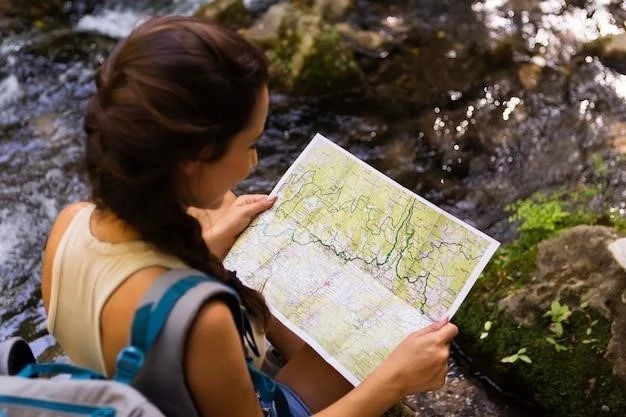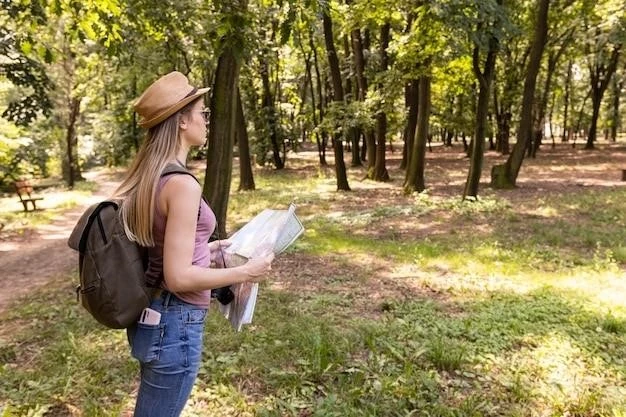Choosing Your National Park
With 63 designated National Parks encompassing diverse landscapes, selecting the perfect one for your 2024 adventure can feel daunting. Begin by considering your interests: are you drawn to towering mountains like those in Denali, the geothermal wonders of Yellowstone, or perhaps the historical significance of sites like Gettysburg?
Research each park’s unique offerings, considering factors like accessibility, available activities (hiking, wildlife viewing, ranger programs), and whether you’re seeking solitude or a more social atmosphere. Matching your interests to a park’s personality will ensure a fulfilling and memorable experience.

Research and Reservations
Embarking on a National Park adventure in 2024 necessitates meticulous planning and securing reservations well in advance. With increasing visitation, a well-structured itinerary ensures you maximize your time amidst these natural treasures.
Park-Specific Resources:
Begin your research by delving into the official National Park Service (NPS) website. This invaluable resource provides comprehensive information on each park, including:
- Fees & Passes: Understand entrance fees and consider purchasing an annual pass if you plan multiple park visits.
- Permits & Regulations: Be aware of any necessary permits for activities like backcountry camping or special tours. Familiarize yourself with park regulations to ensure a safe and respectful visit.
- Operating Hours & Seasonal Closures: Note park operating hours, as these can vary seasonally. Be mindful of potential road closures or limited access during certain times of year.
- Ranger Programs & Activities: Enhance your experience by participating in ranger-led programs, hikes, or talks. These offer invaluable insights into the park’s history, geology, and wildlife.
Accommodation & Campgrounds:
National Park accommodations range from rustic campgrounds to historic lodges. Demand often exceeds availability, especially during peak seasons.
- Reservations: Reserve your stay as early as possible, often 6 months to a year in advance for popular parks or campgrounds.
- Alternatives: Explore lodging options in nearby gateway towns if park accommodations are full. Consider this when planning your daily itineraries.
Timed Entry Systems:
To manage visitation and protect fragile ecosystems, many parks have implemented timed entry systems, especially during peak seasons.
- Research & Reservations: Check the NPS website or park-specific pages to determine if your chosen park requires timed entry reservations.
- Planning: Secure these reservations well in advance, as they are often limited and can book up quickly. Factor in reservation times when planning your daily activities within the park.
Transportation & Parking:
Navigating within National Parks often involves driving, and parking can be limited, especially during peak hours.
- Shuttle Services: Consider utilizing park shuttle services where available. This reduces congestion and allows you to enjoy the scenery without the stress of driving and parking.
- Alternative Transportation: Explore options like biking or hiking trails accessible from less crowded areas of the park.
Additional Tips:
- Flexibility: Be prepared to adjust your itinerary based on weather conditions, unexpected closures, or availability.
- Back-up Plans: Have alternative hikes or activities in mind in case your first choice is unavailable or weather conditions change.
- Packing Essentials: Pack for all types of weather, as conditions can change rapidly in mountainous or desert environments. Essential items include layers of clothing, rain gear, sturdy footwear, a hat, sunscreen, and plenty of water.
By thoroughly researching and securing reservations well in advance, you’ll be well-prepared to navigate the intricacies of visiting National Parks in 2024٫ ensuring a seamless and unforgettable experience.

Best Time to Visit and Weather Considerations
Choosing the optimal time to embark on your National Park adventure is crucial, as each season paints these natural wonders in different hues and brings unique experiences. Weather, too, plays a pivotal role in shaping your trip, so understanding seasonal variations is essential for a safe and enjoyable journey.
Shoulder Seasons (Spring & Fall):
Often considered the ideal time to visit many National Parks, shoulder seasons offer a balance of pleasant weather, fewer crowds, and the potential for stunning natural displays.
- Pleasant Weather: Enjoy milder temperatures, making hiking and outdoor activities more comfortable.
- Fewer Crowds: Experience shorter lines at popular attractions and a more tranquil atmosphere overall.
- Spring Blooms & Fall Foliage: Witness vibrant wildflowers carpeting meadows in spring or the breathtaking tapestry of fall colors.
However, be prepared for unpredictable weather during these transitional seasons. Pack layers of clothing to accommodate fluctuating temperatures.
Peak Season (Summer):
Summer brings long daylight hours, ideal for maximizing your time exploring, but also draws the largest crowds.
- Warm Weather & Long Days: Take advantage of extended daylight for hiking and exploring remote areas.
- Family-Friendly Activities: Many parks offer ranger-led programs and activities specifically designed for families during the summer months.
Be prepared for:
- Increased Crowds: Expect longer lines at entrances, attractions, and limited parking availability.
- Higher Accommodation Prices: Book your stay well in advance and anticipate higher rates during peak season.
Off-Season (Winter):
While some parks have limited access during winter, others transform into magical winter wonderlands, offering unique experiences.
- Winter Activities: Embrace opportunities for snowshoeing, cross-country skiing, and witnessing stunning snow-covered landscapes.
- Solitude & Tranquility: Experience the parks in a serene and peaceful setting with significantly fewer visitors.
Be aware of:
- Road Closures: Some roads and areas may be inaccessible due to snow or icy conditions. Check park websites for current conditions and closures.
- Limited Services: Some facilities and amenities may operate on reduced hours or be closed during the winter months.
Weather Resources:
Before your trip, consult reliable weather forecasts and pack accordingly.
- National Weather Service: Provides accurate and detailed weather information for specific locations.
- Park Websites: Often offer current conditions, weather alerts, and seasonal advisories.
By considering seasonal variations and consulting weather resources, you can select the best time to visit and pack appropriately, ensuring a comfortable and enjoyable National Park experience.
Transportation and Accommodation
Navigating the vast landscapes of National Parks and securing comfortable lodging are key components of a successful trip. Careful planning for both transportation within the park and accommodation options ensures a seamless and enjoyable experience.
Transportation Options:
Depending on the park and your itinerary, various transportation methods are available:
- Personal Vehicle: Offers flexibility for exploring at your own pace but requires careful planning for parking, especially during peak hours or at popular trailheads.
- Park Shuttles: Many parks provide free shuttle services, reducing congestion and offering convenient access to key attractions. Check schedules and routes in advance.
- Biking: An eco-friendly way to explore paved paths and designated bike trails, offering a different perspective of the park’s beauty.
- Hiking: For the adventurous, hiking provides an immersive experience, allowing you to connect with nature on a deeper level. Obtain trail maps and plan your routes carefully.
- Concessionaire Tours: Guided tours via bus, boat, or even horseback are available in some parks, offering insightful commentary and unique perspectives.
Accommodation Choices:
National Parks offer a range of accommodation options to suit various preferences and budgets;
- Lodges: Historic and often iconic, lodges provide a comfortable and immersive experience within the park. Book well in advance, as availability is limited, especially during peak season.
- Campgrounds: Ranging from primitive to RV-equipped sites, campgrounds offer a budget-friendly and adventurous way to experience the park’s tranquility. Reservations are highly recommended, especially during peak season.
- Gateway Towns: If park accommodations are full, explore options in nearby gateway towns. This allows for alternative lodging choices but may require additional travel time to access park attractions.
- Backcountry Camping: For experienced adventurers seeking solitude, backcountry camping requires permits and careful planning. Obtain necessary permits in advance and be prepared for self-sufficiency in remote areas.
Transportation and Accommodation Tips:
- Book Early: Reserve accommodations and any guided tours well in advance, especially if traveling during peak season.
- Consider Accessibility: If you have mobility concerns, inquire about accessible trails, accommodations, and transportation options within the park.
- Pack Smart: Pack for all types of weather, including layers of clothing, rain gear, and sturdy footwear.
- Respect Quiet Hours: Observe designated quiet hours in campgrounds and be mindful of noise levels to preserve the park’s tranquility.
By carefully considering your transportation needs and securing accommodation well in advance, you can create a comfortable and memorable National Park experience, allowing you to fully immerse yourself in the wonders of these natural treasures.

Packing Essentials
Packing for a National Park adventure requires careful consideration of the environment and planned activities. A well-packed bag ensures comfort, safety, and preparedness for the unexpected, allowing you to fully embrace the wilderness experience.
Clothing:
Pack for a variety of weather conditions, as temperatures can fluctuate dramatically, even within a single day.
- Layers: Opt for moisture-wicking base layers, insulating mid-layers (fleece or wool), and a waterproof, windproof outer shell. This allows for adaptability to changing conditions.
- Hiking Pants/Shorts: Choose durable, quick-drying fabrics. Convertible pants offer versatility.
- Moisture-Wicking Shirts: Avoid cotton, as it absorbs moisture and dries slowly.
- Warm Hat & Gloves: Essential for cooler mornings, evenings, or higher elevations.
- Rain Gear: Pack a waterproof jacket and pants to stay dry during unexpected showers.
Footwear:
Sturdy, comfortable footwear is paramount for navigating trails and uneven terrain.
- Hiking Boots: Choose boots that provide ankle support and good traction, especially for longer hikes or challenging trails.
- Camp Shoes: Pack lightweight, comfortable shoes for relaxing at camp or wearing around the lodge.
Essentials:
- Backpack: Select a comfortable backpack with adjustable straps, suitable for carrying water, snacks, layers of clothing, and other essentials.
- Water Bottle or Hydration Pack: Staying hydrated is crucial. Carry plenty of water, especially during strenuous activities.
- Snacks: Pack high-energy snacks like trail mix, granola bars, or dried fruit to keep you fueled throughout the day.
- First-Aid Kit: Include essentials like bandages, antiseptic wipes, pain relievers, and any personal medications.
- Sunscreen & Insect Repellent: Protect yourself from the elements with a high SPF sunscreen and insect repellent containing DEET.
- Hat & Sunglasses: Shield yourself from the sun with a wide-brimmed hat and sunglasses with UV protection.
Additional Gear (Consider Based on Activities):
- Trekking Poles: Provide stability and reduce strain on joints, especially during longer hikes.
- Headlamp or Flashlight: Essential for navigating campgrounds or trails after dark.
- Binoculars: Enhance wildlife viewing experiences.
- Camera: Capture memories of stunning landscapes and wildlife encounters.
Packing Tips:
- Pack Light: Choose versatile items that can be layered or used for multiple purposes.
- Use Packing Cubes: Organize your belongings and maximize space within your luggage.
- Keep Essentials Accessible: Pack frequently used items like water bottles, snacks, and rain gear in easy-to-reach compartments.
By packing thoughtfully and including these essentials, you’ll be well-prepared to embrace the adventures that await in the National Parks, ensuring a safe, comfortable, and unforgettable experience.

Budgeting and Entrance Fees
Planning a National Park trip requires careful budgeting to ensure you can fully enjoy the experience without financial strain. Understanding the costs involved, including entrance fees, accommodation, transportation, and activities, allows for informed decision-making and a more enjoyable trip.
Entrance Fees:
- Park-Specific Fees: Most National Parks charge entrance fees, typically ranging from $20 to $35 per vehicle or per person for those entering on foot or by bicycle. These fees are valid for 7 days.
- America the Beautiful Pass: If you plan to visit multiple National Parks within a year, consider purchasing an “America the Beautiful” pass for $80. This pass grants access to over 2,000 federal recreation sites, including National Parks, for a full year.
- Free Entrance Days: The National Park Service offers several fee-free days throughout the year, providing opportunities for budget-conscious visitors. Check the NPS website for the 2024 schedule.
Accommodation:
- Camping: Typically the most budget-friendly option, with fees ranging from $15 to $50 per night depending on the campground and amenities. Reserve well in advance, especially during peak season.
- Lodges: Offer a more luxurious experience but come at a higher price, often ranging from $150 to $500 per night or more, depending on the lodge and season.
- Gateway Towns: Consider lodging options in nearby towns for potentially lower costs but factor in additional travel time and expenses.
Transportation:
- Fuel Costs: If driving, factor in fuel costs, especially for longer road trips. Research average gas prices along your route.
- Vehicle Entrance Fee: Remember that most parks charge a per-vehicle entrance fee, even if you’re staying outside the park.
- Alternative Transportation: Consider park shuttles, biking, or hiking to reduce fuel costs and parking hassles.
Additional Expenses:
- Food & Beverages: Pack snacks and meals whenever possible to save on dining costs. Groceries in gateway towns are often more affordable than park concessions.
- Activities & Tours: Budget for any guided tours, boat trips, or special activities you plan to enjoy.
- Souvenirs: Set a budget for souvenirs if you wish to bring home mementos of your trip.
Budgeting Tips:
- Plan Ahead: Research costs for accommodation, activities, and transportation in advance to create a realistic budget.
- Travel Off-Season: Consider visiting during shoulder seasons for potentially lower accommodation costs and fewer crowds.
- Pack Smart: Bringing essentials like snacks, water bottles, and first-aid supplies can help reduce expenses.
- Utilize Free Activities: Many parks offer ranger-led programs, hikes, and evening programs free of charge.
By carefully considering entrance fees, accommodation costs, transportation, and other expenses, you can create a budget that aligns with your financial resources, ensuring a memorable and financially responsible National Park adventure.

Safety and Regulations
Preserving the pristine beauty of National Parks and ensuring visitor safety requires adherence to park regulations and responsible practices. By familiarizing yourself with safety guidelines and respecting park rules, you contribute to a safe and enjoyable experience for all.
Wildlife Safety:
- Observe from a Distance: Never approach or feed wildlife. Use binoculars or telephoto lenses for close-up views.
- Store Food Securely: Store food and scented items, including toiletries, in bear-proof canisters or lockers, where provided.
- Be Bear Aware: In bear country, carry bear spray and know how to use it properly. Make noise while hiking to avoid surprising bears;
- Respect Wildlife: Remember that you are a visitor in their home. Observe wildlife from a safe distance and avoid disturbing their natural behaviors.
Trail Safety:
- Plan and Prepare: Research trails in advance, considering your fitness level and experience. Check weather conditions and inform someone of your itinerary.
- Stay on Designated Trails: Protect fragile vegetation and prevent erosion by staying on marked paths.
- Carry Essentials: Bring plenty of water, snacks, a map, compass, sunscreen, and a first-aid kit, even on short hikes.
- Be Weather Aware: Conditions can change rapidly. Be prepared for rain, sun, heat, and cold. Check forecasts before heading out.
- Hike with a Buddy: For safety, hike with a partner and let someone know your plans.
Park Regulations:
- Permits: Obtain necessary permits for activities like camping, backcountry hiking, or fishing.
- Campfires: Follow fire restrictions and use designated fire rings or grills. Keep fires small and attended.
- Pets: Check pet regulations before bringing your furry companions. Leashes are required in most areas.
- Drones: Drone usage is generally prohibited in National Parks. Check park-specific regulations for exceptions.
- Leave No Trace: Pack out everything you pack in, dispose of waste properly, and leave natural and cultural artifacts undisturbed;
Emergency Preparedness:
- Know Your Location: Pay attention to trail markers and landmarks. Carry a map and compass and know how to use them.
- Cell Service: Be aware that cell phone reception may be limited or unavailable.
- Emergency Contacts: Save park emergency contact information in your phone and share your itinerary with someone.
By prioritizing safety, adhering to park regulations, and practicing Leave No Trace principles, you contribute to the preservation of these natural treasures and ensure a safe and enjoyable experience for yourself and fellow visitors.










